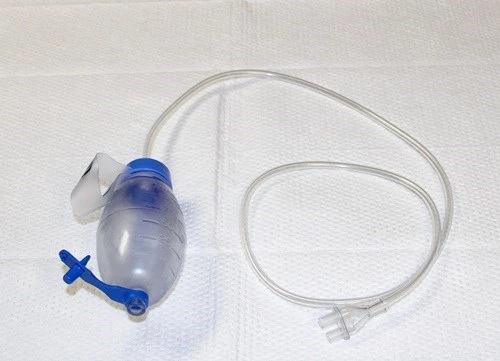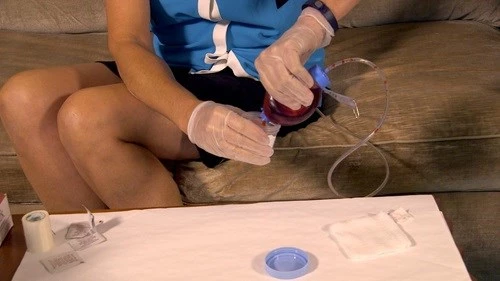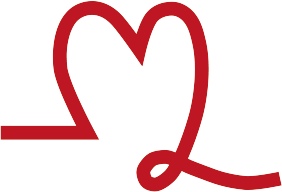Surgical drain care
What are surgical drains?
Surgical drains are tubes placed near surgical incisions in the post-operative patient, to remove pus, blood or other fluid, preventing it from accumulating in the body. The type of drainage system inserted is based on the needs of the patient, type of surgery, type of wound, amount of drainage expected, and surgeon preference. The drain usually has two parts—a thin rubber tube and a round squeeze bulb. The bulb acts as a reservoir for the fluids and it’s also used to create a vacuum that helps with drainage.

What Should I Know About My Drains?
Emptying the drain and caring for your wound correctly helps you avoid infection and speeds healing. When the amount of drainage decreases to the level your doctor or nurse told you, your provider removes the drain.
These general instructions can get you started:
- Empty the reservoir at least two times a day, even if it’s not full. You may need to empty it more than twice if it gets full.
- Change the dressing around the wound at least once a day, or more often if it becomes soaked or dirty.
- “Milk” the tubing every four hours while you are awake. This is also called “stripping” the tubing, and it prevents the drain from getting clogged.
How Should I Empty My Surgical Drains?
Empty the reservoir bulb in the morning and evening, or if it gets full. First, gather all the supplies you need, including the measuring cup and chart you were given, along with a pen or pencil. Then follow these steps:
- Wash your hands well in soapy water.
- Open the plug on the reservoir without touching the inside of the plug.
- Gently squeeze the reservoir to empty the fluid into the measuring cup.
- Re-create the vacuum inside the reservoir by squeezing it flat and then replacing the plug.
- Observe the amount of fluid and its color so you can write it down later. Then flush the fluid down the toilet.
Wash your hands again. - Record the amount of fluid for each drain on the chart. Remember to bring the chart with you to your first follow-up visit with your doctor.

When Should I Call My Doctor?
Call your doctor if any of these things happen:
- The tube falls out or the stitches that hold it in place get loose.
- You can’t re-create a vacuum in the reservoir bulb.
- Your skin becomes red or more tender or swollen near the tube.
- The drainage fluid has a bad odor, is cloudy, pale yellow or yellow-green.
- You have a temperature of 38 degrees C or higher.




